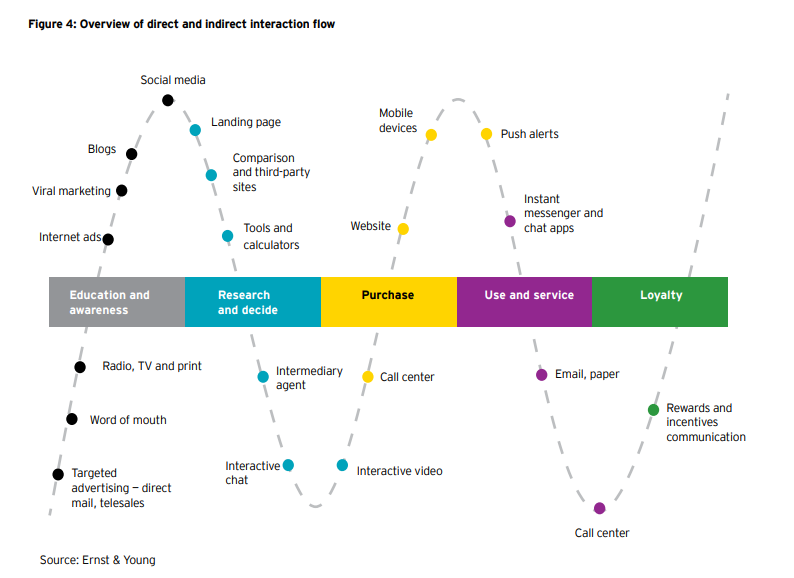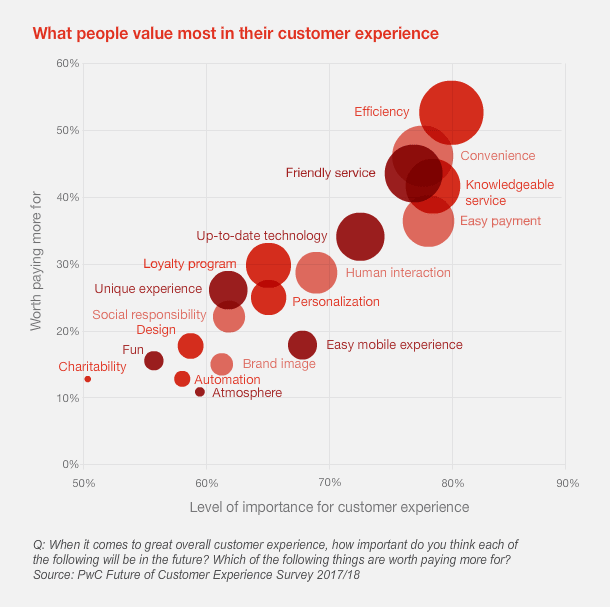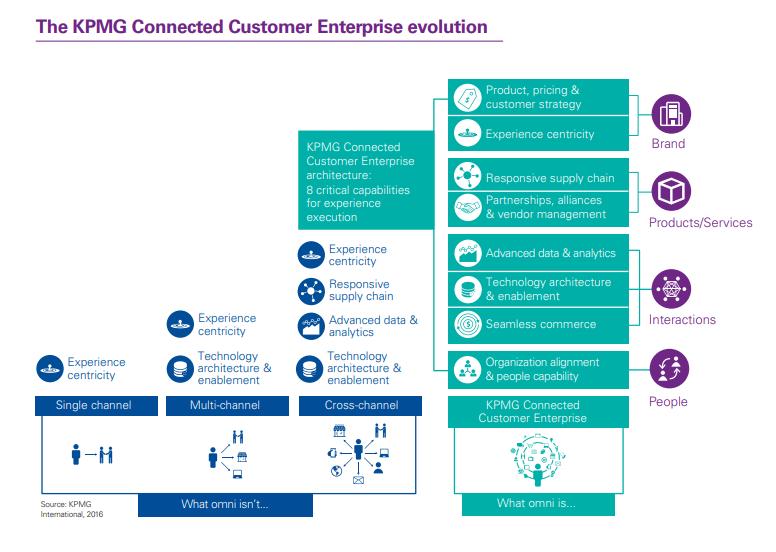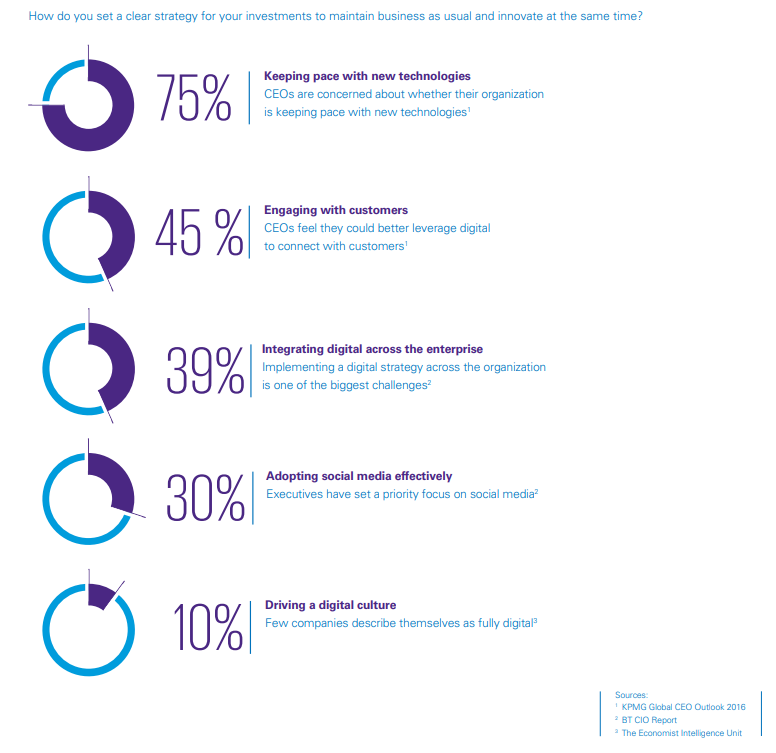How would you define a Customer Experience strategy for an ‘invisible’ customer? Despite all the data and analytics that marketers now have access to, the customer continues to be an invisible identity – putting massive barriers in the way of developing a customer-centric approach for Marketing, Sales and Service.
The Customer Service industry has transformed dramatically in the last 5-6 years. We have often heard from MarTech leaders debating over customer experience as a destination or a journey. For both cases, we feel, customer-centricity is a key component that decides for their success or failure. A leading consulting firm, Ernst & Young (EY) points to overall customer experience as influenced by customers’ direct and indirect interactions with an organization — both physical and digital touchpoints. It provides a heads-up on the need for customer-centric innovation and the adoption of Marketing and Sales Technologies for achieving sustainable top-line growth.

The pace of innovations in Marketing Technology, Sales Technology, and Data Science have provided a major thrust to this transformation. With digitally-driven Marketing and Sales, business owners expect their revenues and customer base to grow. Too much is at stake for businesses as far as delivering on customer satisfaction is concerned. According to the American Express 2017 Customer Service Barometer, “33% of Americans say they’ll consider switching companies after just a single instance of poor service.” Yes, setting customer-centric goals are important. However, most companies (including the ones that use technologies for Marketing, Sales and Customer Service) find it increasingly difficult to define, prioritize, and measure their brand’s customer-centricity.

Brands can draw inspiration from what T had said. “People don’t care how much you know until they know how much you care.”And, the level of sophistication in your customer-centricity can hugely impact your business values. As Salesforce found out, “74% of people are likely to switch brands if they find the purchasing process too difficult,” the idea of executing customer-centricity is far more complex than what modern marketers perceive it to be.
So, is customer-centricity a fantasy for Marketing and Sales to succeed with their strategies?
Here are 5 enticing stats that show why Customer-Centricity is a hard game to master and win against tough competition, especially when you have a limited arsenal in the form of Marketing and Sales Technologies.
Only 15% of Marketing Leaders Think their Company Truly Invest in Improving Customer Experiences
According to eConsultancy, the organizations that want to become a thorough-bred ‘Digital Native’ aim for Customer-Centricity first, followed by data-driven operations, innovation, collaboration, and agility.
In a survey of global Customer Experience, Customer Success, and Marketing, SurveyMonkey reported that though customer-centric goals are important, most companies struggle with budgeting and managing customer experiences. These respondents acknowledged that the Marketing team owns the CX metrics, and therefore, should be accountable to develop an inter-departmental Customer-centric approach for Sales, Services, and Operations.
Tip: In pushing efforts to develop and strengthen customer-focused experiences, Marketing teams could share a summary of their product reviews, case studies, testimonials, email and social media interactions with the Sales and Customer Service teams.
Siamese Twins in Marketing and Sales: Customer-Centricity and Loyalty
Customer-centricity is no longer a differentiator in Marketing and Sales. It has become a mode of survival.
If you don’t acquire and retain your customers, you won’t survive. Finding ‘Connectivity’ in customer experience remains one of the biggest pain-points to understanding customer-centricity. Online customers typically encounter issues resulting from disconnected experiences across the website, online sales, telephone customer service, and outsourced supply chain.
According to KPMG’s Customer First report, CEOs are finding it extremely difficult to not just compete with the wave of new entrants and competitors but also with remaining relevant to customers. In the first half of the decade, customer relevancy of a brand hovered over product, pricing, experience, and loyalty.
This infographic is a great resource to understand today’s customer-centricity.

Today, loyalty has slipped against the new economies of CX.
Connected Experiences: Mastering Customer Intelligence to Develop Centricity
In the era of ‘actionable insights’, AI, Automation and ABM have become the cornerstones of the connected Customer Experience economy. Together, these are driving customer-centricity to the hilt. Almost every CEO agrees that predicting the needs of the customer using AI and Predictive Intelligence could improve the outcome of their customer-centric Marketing and Sales efforts. Connected Experiences are a series of incremental steps that take Marketing and Sales companies closer to their CX goals.
Brian Giese, CEO at True Influence, said –
“SFDC, ABM, and AI are the cornerstones of Marketing and Sales collaboration and potential increases in revenue. With the Salesforce CRM, a company’s Sales, Marketing and Customer Service teams can understand every customer on an individual level and create a personal experience for each. This makes the CRM software more than just a platform or a service; it’s a tool that can directly increase Sales, Customer Retention and Revenue.”

Aaron Raddon, CTO at Lytics, explained what does it take for an organization to build true Customer Intelligence. These are –
- The Insights and Actions must be connected.
- You must be able to understand why a user is clicking/converting, and what content is relevant to the individual user.
- You must be able to move beyond campaigns, which are still based on segments, to Marketing techniques that are one-on-one.
Aaron added, “Rather than looking at intent-data, we would look at “interest-data,” which digs deeper into understanding what a user is truly interested in. For example, interest-data tells us that if a user went out and bought vegan ice-cream, it’s very unlikely that they’d purchase leather shoes based on vegan tendencies.”
Unifying 17 Customer Identities that Marketing Departments See with their MarTech Prism
Marketing teams are competing with their ability to wrangle data and put actionable insights at the center of all Marketing, Sales and Services approaches. Drew Chapin, Vice President of Marketing at Hyland, said –
Data Democratization is the key to an enterprise’s ability to compete on data. It is difficult to choose a single technology having the most positive impact since there is a whole family of technologies that work together to achieve this.
According to Oracle’s SVP Kevin Akeroyd, CMOs should address their MarTech silos to build a customer-centric approach. Kevin said –
“In a Fortune 500 company, there may be 17 silos in the marketing department, and each customer looks like a different person in all 17 of those silos because each silo has its own database, content system, user interface, and campaign reporting tools. And each of those 17 marketing VPs has KPIs against which they are held accountable—KPIs that might be incredibly myopic and contradictory.”
Tip: By 2020, Marketing and Sales teams should shift their Customer-Centricity from being “customer-focused” to “customer committed.”
Balancing with Automation, and Human May Not Hurt Customer-Centric Approach
According to PwC, “Human interaction matters now—and 82% of U.S. and 74% of non-U.S. consumers want more of it in the future.”
Automated response through chatbots exemplifies customer support initiatives from the Marketing and Sales teams. Automated interactions through chatbots have become popular with customers. According to a Grand View research, around 45% of end-users prefer them as the primary mode of communication for questions regarding customer service.
IBM reported in 2017, Per year 265 Billion Customer Requests are recorded. In total, businesses spent nearly $1.3 trillion to service these requests. Using Chatbots can help them save up to 30% of this.
However, customers still prefer to experience a bit of human touch in their interactions.
According to Hotjar’s CX trends for 2019, too much of automation with a limited human touch actually frustrate customers. These could result in long waiting times in responses generated for complex queries, unresolved issues and lack of Personalization.

According to this QATC report, call center attrition rates are twice the average of all other industries combined (30% – 45% compared to the U.S. average of 15%).
Customer-centricity could (and it should) outshine all other Marketing and Sales approaches by 2020. While leading adopter of MarTech and SalesTech could see their Customer-Centricity growing more complex, ignorant business owners could lose out a major chunk of their Marketing competitiveness with lack of initiatives into CX and centricity. As Voice, Location Data, and AR VR become more and more ubiquitous in delivering CX throughout customer buying journeys, we will continue to see Customer-Centricity narrative changing now and again.











